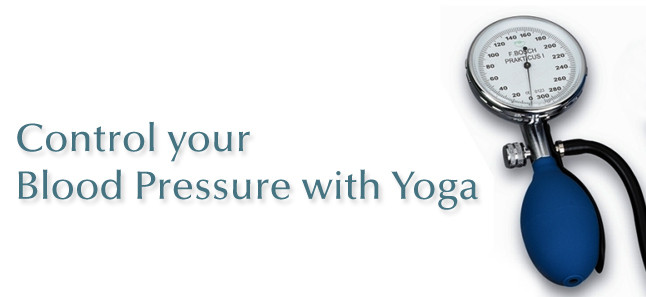Blood pressure (BP) is the term for an essential function of the body, in which, as the heart alternately pumps and relaxes, the blood in the arteries exerts a force on the artery-walls.
It is measured by the combination of two numbers: your systolic score written above your diastolic score. The systolic number measures your blood pressure while the heart pumps blood, and the diastolic number (which is regarded as more important), represents the blood pressure between beats.
If the blood vessels are not relaxing normally, and if there are blockages in the arterioles, it can lead to increase in blood pressure. This is termed as high blood pressure.
The Risks Involved
Though BP normally varies through the day, being higher at work and lowest when a person is sleeping, older persons, and those with undetected or neglected stress-levels, are at greater risk for high BP. This can also be a risk factor for many chronic diseases like:
- Heart failure and stroke (especially at the time of waking), heart attack angina pectoris
- Hardening of the arteries
- Enlarged heart muscles
- Kidney damage and endocrine gland malfunction
- High BP leads to hypertension
- Weakens cardio-vascular system
- Increases workload of heart and arteries.
Hypertension – The Silent Killer
The most commonly-occurring type of high BP is hypertension, known as the “silent killer” because it gives no overt symptoms/indications. It has numerous causes, depending on the individual’s constitution, health condition and lifestyle. Stress, lowered immunity, poor nutrition/digestion, hardening of arteries and obesity are some of the other factors that contribute to high BP.
Symptoms of High BP
High BP is normally, not easy to detect, nor is its high-end variation, hypertension. Watch out for the following symptoms and consult your healthcare professional at the earliest:
- Dizziness/light-headedness, tiredness
- Heart pain, breathing problems, palpitation
- Sound in the ears
- Headaches, ache in neck on waking, generally subsides quickly
- Tension
- Frequent urination
- Dull vision.
Why Yoga for High BP?
Yogasanas are recognized to be beneficial for those with this problem:
- Creates an alpha brain wave state that actually lowers blood pressure.
- Brings balance to the autonomous nervous system, stabilizes the sympathetic and parasympathetic nervous system.
- Enhances circulation to all parts of the body and oxygenates the blood, enhancing alertness and cognitive skills and reducing stress and tension.
- Promotes therapeutic “side–benefits” like increased strength, flexibility, calmness of mind.
- Addresses the problems of shallow breathing and increased heart rate.
- Being scientific, asanas channel the life-force or prana into all parts of the body, assisting the body to heal itself.
- Can promote weight-loss.
Normalize your Blood Pressure with basic yoga asanas:
Sitting and supine positions that place the spine in a horizontal position, and exert less strain on the heart can be therapeutic. Depending on your condition, the following asanas can be considered:
- Sukhasana
- Bhramari pranayama
- Janusirsasana
- Paschimotanasana
- Shavasana
- Setu Bandhasana
- Variation on Pawanmuktasana (circular movements with knees - don't lift head up)
- Makarasana with Bhramari pranayama
- Shishuasana
Complete your yoga routine with a guided meditation. Bookmark this list of guided meditations by Gurudev Sri Sri Ravi Shankar.
Cautions to be Exercised
- Practice yogasanas only after consulting your healthcare professional, and a qualified yoga therapist, as the asanas that invert the body i.e. - where the head is below the body - are to be avoided. Discuss your medication and diet-regime with them. And once you have started yoga practice, careful monitoring of medication-levels by your doctor is crucial.
- Gently close your eyes during yoga, rest a few breaths after each pose, and do not over-exert.
- Follow the recommended inhalation/exhalation pattern for each asana.
- A few gentle warm-up exercises before the asanas, and resting in Shavaasana (Corpse Pose) after the yoga routine, is essential.
Eat Right, Exercise Right
Supplement your yoga practice with these simple, multi-therapeutic lifestyle changes:
- Shake your head - at the salt-shaker! Learn to use lemon, low-fat curds, unusual spices and herbs as substitute taste-givers and enhancers. And remove those pickles from the dining table! Opt for healthier low-salt chutneys and salads.
- Vegetables and fruits rich in potassium and magnesium like lady fingers, black beans, pumpkin seeds and spinach can help in lowering BP.
- Eat natural: avoid canned, packaged, frozen and restaurant foods.
- No smoking, limit alcohol intake.
- Recommended: herbal teas and fruit drinks like pomegranate juice, green tea.
- Consult your doctor for recommended levels of fat/oil intake. Monitor weight-gain.
- Discuss with your doctor the type and level of daily exercise that is best for you. Incorporate meditation, pranayama in your routine. Learn the art of letting go.

